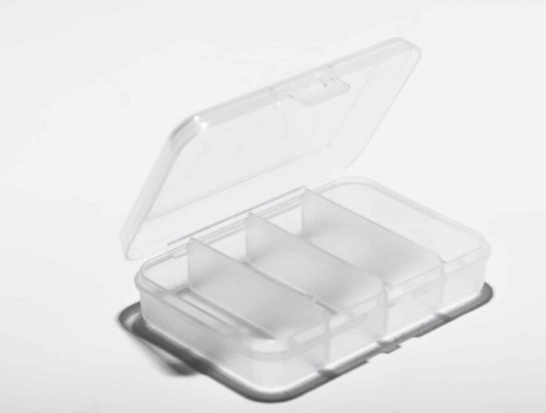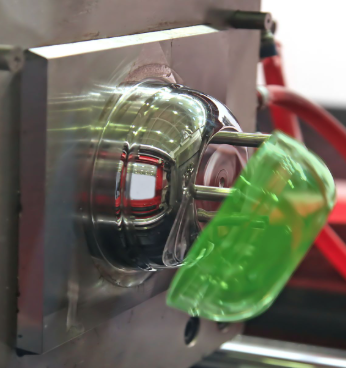Living Hinges in Plastic Injection Moulded Parts for Competitive Advantage for Industrial Designers.
- equipedesign

- Mar 9
- 5 min read
Plastic injection moulding has revolutionized the manufacturing industry over the last 50 years by offering cost-effective, scalable, and durable solutions for various applications.
One of the most fascinating features in plastic injection moulding is the living hinge.
Living hinges are thin, flexible sections of plastic that connect two rigid parts, allowing them to pivot without the need for separate mechanical hinges.
These hinges are widely used in packaging, medical devices, and consumer goods due to their durability and ease of use.
We will explore the concept of living hinges, their design considerations, material selection, manufacturing process, advantages, and applications to bring competitive advantage to your designs.

What is a Living Hinge?
A living hinge is an integral part of an injection moulded plastic component that allows repeated bending or flexing without failure. Unlike traditional hinges, which consist of multiple components like pins and metal fasteners, living hinges are formed as a single piece during the moulding process. This eliminates the need for assembly, reducing production costs and improving product reliability.
Living hinges are commonly found in plastic containers, flip-top caps, clamshell packaging, and medical devices. They provide smooth movement and can withstand thousands of cycles without breaking.
Materials Suitable for Living Hinges
Selecting the right material is crucial for the performance and longevity of living hinges. The material must exhibit high flexibility, excellent fatigue resistance, and good mouldability.
The most commonly used materials include:
1. Polypropylene (PP)
Most popular choice due to its exceptional flexibility and fatigue resistance.
Low cost and easy to mould.
Excellent chemical resistance and durability.
2. Polyethylene (PE)
Offers good flexibility and toughness.
Suitable for applications requiring moderate strength and flexibility.
3. Thermoplastic Elastomers (TPEs)
Highly flexible and rubber-like material.
Provides superior fatigue resistance but can be more expensive than PP and PE.
4. Nylon (Polyamide, PA)
Used in specific applications requiring higher strength.
Less flexible than PP but offers improved wear resistance.
Among these materials, polypropylene (PP) is the preferred choice for most living hinge applications due to its balance of cost, performance, and manufacturability.
Design Considerations for Living Hinges
Designing a robust and durable living hinge requires careful consideration of various factors. Some key aspects include:
1. Thickness and Geometry
The hinge should be thin enough to allow flexibility but not so thin that it becomes weak.
A typical living hinge thickness ranges between 0.2 mm to 0.5 mm.
A gradual tapering transition between the hinge and rigid sections prevents stress concentration and improves durability.

2. Radius and Curvature
Sharp edges can create stress points leading to premature failure.
A smooth radius in the hinge area (typically 0.25 mm to 0.5 mm) enhances strength and longevity.

3. Hinge Length and Width
Longer hinges distribute stress more evenly, reducing failure risks.
The width should be sufficient to prevent excessive strain but not so wide that it loses flexibility.
4. Draft Angles
Incorporating a slight draft angle ensures easy ejection from the mould and prevents deformation.
5. Gate Placement
The location of the injection moulding gate is critical for hinge performance.
The gate should be placed near the hinge to allow uniform material flow and minimize weak spots.
6. Molecular Orientation
This is a key feature that allows for hinge longevity.
During injection moulding, polymer molecules align along the flow direction.
Proper gate placement and flow control help achieve optimal molecular orientation, enhancing hinge durability.
Gate location will also ensure weld lines, voids/air entrapment and short shorts are located will away from the hinge region.
Manufacturing Process of Living Hinges
Living hinges are created using injection moulding, a widely used manufacturing technique for plastic components. The process involves the following steps:

Step 1: Mould Design
A precision-engineered mould is designed to include the hinge feature. Proper cooling channels and gate locations are planned to ensure uniform material flow and avoid defects.
Step 2: Material Selection and Preparation
The chosen plastic material (usually PP) is prepared in granulated form and dried if necessary to remove moisture that will compromise the hinge longevity and performance.
Step 3: Injection Moulding
The plastic is melted and injected into the mould cavity under high pressure.
The material fills the cavity, including the hinge section, and takes its final shape.
Cooling is controlled to allow molecular alignment in the hinge area.
Step 4: Ejection and Post-Processing
Once the plastic solidifies, the part is ejected from the mould.
Many applications may require secondary operations like annealing to improve hinge flexibility. This is also called “exercising” the hinge and can be performed manually by hand after ejection or automatically with the use of actuated sliders within the tool or robots that enter the tool space prior to ejection
The latter may add fractionally to the cycle time but eliminates manual overhead costs.
Advantages of Living Hinges
Living hinges offer several benefits compared to traditional hinges, making them a preferred choice in many industries.
1. Cost-Effective Production
Eliminates the need for assembly, reducing labour costs.
Uses a single piece of plastic, reducing material costs.
2. Improved Reliability
No mechanical parts that can loosen or fail over time.
Long lifespan with thousands of flexing cycles.
3. Lightweight and Compact
Ideal for portable and consumer products.
Reduces overall product weight.
4. Customizable and Versatile
Can be designed for various applications, from packaging to medical devices.
Easily integrated into different product designs.
5. Resistant to Corrosion and Wear
Unlike metal hinges, plastic living hinges are resistant to rust and environmental degradation.
Applications of Living Hinges
Living hinges are used in various industries due to their durability and cost-effectiveness. Some common applications include:

1. Packaging Industry
Flip-top caps for shampoo bottles and condiment containers.
Clamshell packaging for consumer goods and electronics.
2. Medical Devices
Hinged covers for syringes and pill dispensers.
Protective cases for medical instruments.
3. Consumer Goods
Storage boxes with attached lids.
Toys and household items requiring flexible joints.
4. Automotive Industry
Hinged covers for battery compartments.
Storage compartments and glove box covers.
Challenges and Limitations
Despite their numerous benefits, living hinges have some limitations:
Material Limitations: Only flexible thermoplastics like PP and PE can be used effectively due to their molecular grain structure.
Design Constraints: Requires precise mould design to prevent premature failure.
Limited Load-Bearing Capacity: Cannot support heavy loads like metal hinges.
Prototyping a Living hinge.
Over the years, advances in CNC machining and 3D Printing have allowed for the prototyping of your designs incorporating living hinges.
This has been a big step forward in proving and de0risking your design before embarking on injection tool fabrication and its inherent capitol expense.
Living hinges are an excellent solution for products requiring repeated flexing without mechanical failure.
With proper material selection and thoughtful design, they provide a cost-effective, durable, and reliable alternative to traditional hinges.
Whether in packaging, medical devices, or consumer goods, living hinges continue to play a vital role in modern manufacturing.
By understanding the key principles behind living hinge design and manufacturing, engineers and designers can create innovative products that enhance user experience and functionality.
As plastic injection moulding technology advances, living hinges will likely become even more versatile and efficient in various applications.
---
équipe design & consulting is a Product Design Consultant in Sydney with 20 years experience in design and manufacture of Medical grade moulded parts and product, including 5 years at the coal face as Operations Manager at a world class medical grade moulding facility; we are specialist in Design for Manufacture (DFM).
Please reach out if you feel you need assistance with your part design for plastic injection moulding.
We offer Design Coaching and Guidance to Full Service Design Consulting.
www.equipedesign.au#Designforplasticinjectionmoulding #DesignForManufacturing #DesignThinking #DesignforManufacture #DesignConsulting #DesignCoaching #equipedesign #DesignforAssembly #IndustrialDesign #CREODesign
References: ChatGPT, Google Images, efunda, rexplastics, protolabs



Comments